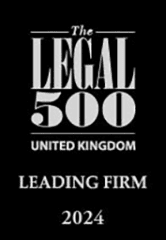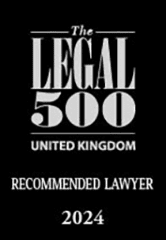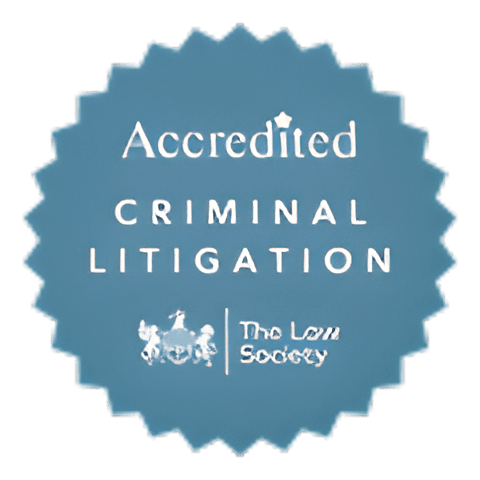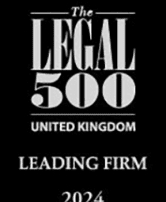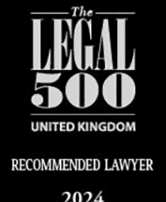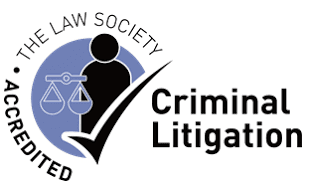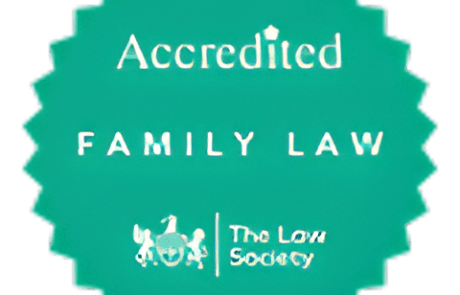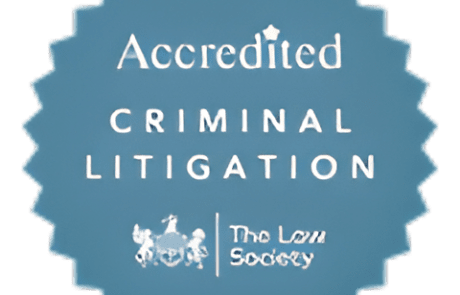Drug Driving
Drug Driving over the legal limit for certain drugs on public roads or spaces is illegal.
Facing a drug driving charge can be a daunting and stressful experience, with serious consequences for your licence, employment, and future. The legal limits for drugs in the UK are strict, and a conviction could lead to fines, driving bans, or even imprisonment. However, with the right legal representation, it is possible to challenge the evidence and reduce or avoid penalties. At Astraea Linskills, our expert solicitors specialise in defending drug driving cases, helping you navigate the complexities of motoring law with confidence.
Drug driving is not only dangerous but also illegal, with strict limits for certain drugs, whether they are prescribed or illegal substances. Many people may be unaware of the specific drug limits and how even common prescription medications could result in a failed roadside test. Understanding which drugs are regulated and how they can impact your driving ability is crucial. To learn more about the legal limits for various drugs and how they are measured in the UK, explore our in-depth guide on drug driving laws.
Legal limit Prescription drugs:
• Clonazepam (used to treat seizures and some panic disorders), 50 µg/L (micrograms per litre)
• Diazepam (used for anxiety disorders, alcohol withdrawal symptoms and muscle spasms) 550 µg/L
• Flunitrazepam (sedative) 300 µg/L
• Lorazepam (used to treat epilepsy) 100 µg/L
• Methadone (used to treat heroin addiction, and as a form of pain relief) 500 µg/L
• Morphine, 80 µg/L
• Oxazepam,(used to relieve anxiety) 300 µg/L
• Temazepam (used to treat insomnia) 1000 µg/L
Illegal drugs:
• Benzoylecgonine (a metabolite of cocaine), 50 µg/L
• Cocaine, 10 µg/L
• Delta–9–tetrahydrocannabinol (cannabis), 2 µg/L
• Ketamine, 20 µg/L (sedative)
• Lysergic acid diethylamide (LSD), 1 µg/L
• Methylamphetamine (Crystal Meth), 10 µg/L
• Methylenedioxymethamphetamine (MDMA – ecstasy), 10 µg/L
• 6-monoacetylmorphine (6-MAM – heroin and diamorphine), 5 µg/L
A limited number of police forces use roadside saliva tests, to test for cannabis and cocaine, however, if the Police have a reasonable suspicion that you are drug driving, you can be arrested and taken to a police station and required to give an evidential sample of blood. If the results show that your sample contains one of the above drugs over the prescribed limits you will be charged and prosecuted for drug driving.
Drug Driving Penalties range from:
• An unlimited fine, unpaid work in the community or an electronically monitored curfew or up to six months imprisonment.
• A mandatory minimum disqualification of 12 months
• This mandatory driving ban increases to a minimum of three years, if you have a previous relevant conviction within the last 10 years
Prescription medication defence for drug driving
It is a defence to demonstrate that you are taking prescription medication in accordance with the advice of your doctor and the patient information leaflets provided by the manufacturer.
The Police must follow various statutory procedures during the investigation which we will scrutinise to establish whether there are any flaws that would give rise to a defence. We regularly instruct the countries leading independent forensic toxicology expert to assess the analysis undertaken by the police laboratory in order to establish whether that evidence is unreliable and can be challenged.
Nama Zarroug and Randox in drug driving
Nama Zarroug has been heavily involved in challenging allegations of drug driving since this law was introduced in 2015.
She raised questions over Randox’s blood-testing procedures after the organisation confirmed that between March 2015 to May 2016 it had not followed a method of analysis widely practiced by forensic science laboratories which were producing results in drug driving cases. The method of analysis that is in question was revealed when we commissioned a forensic toxicology expert to review the toxicology reports and laboratory procedures on behalf of a driver accused of drug driving.
When the unusual procedure came to light, we made Freedom of Information requests in order to understand how Randox’s decision not to carry out the dual sample extraction procedure could have affected her clients.
The method widely practiced by forensic laboratories, follows forensic guidelines which were published by the United Kingdom and Ireland Association of Forensic Toxicologists (UKIAFT) as a scientific paper in the Journal of Science and Justice in 2010 :
“It is recognised that for a variety of reasons occasional analytical results will be outliers; that is, analytical values which deviate significantly and spuriously from the true value. “Outlier” results of control, blanks or calibrators should be obvious. However outlier results of case specimens may not be identified if only run singly, unless that result can be compared with one from a separate analytical determination. For this reason replicate extraction and quantitative analysis, at least in duplicate, is recommended.
These guidelines were issued for guidance purposes and have no legal or regulatory powers. However, the majority of forensic toxicology providers follow these guidelines on the basis that doing so helps them to achieve the most reliable result.
According to the National Police Chief’s Council Lead for Roads Policing Suzette Davenport, Chief Constable, Gloucestershire Constabulary, when the Home Office awarded the ‘drug testing’ contract to Randox, it expected that Randox would follow the dual sample extraction procedure recommended in these guidelines. On 18/4/2016, she wrote to all the Chief Constables stating:
“The analysis of blood for toxicology purposes can be viewed as two processes. The first is the extraction of the drugs from the blood into a solvent suitable for analysis. The second is the analysis of the solvent containing the drugs using an analytical method. The specification requires the analysis be performed in replicate. The expectation, on the part of the Home Office, was that providers would take two aliquots (small sub-samples) of the blood sample and then, for each aliquot, extract the drugs and analyse the resultant extract separately. However, the wording of the specification did not state this explicitly.
“Replicate extraction provides confidence that both extraction and analysis have worked correctly. Randox interpreted the specification in a different manner. It takes one aliquot of blood, extracts the drugs, and then carries out two analyses on that extract. This method includes checks on the operation of the extraction process (through quality control samples) but no check, for the specific test, on the reliability of the process. A problem with the extraction process could cause the concentrations to be determined lower or higher than the true figure. Such a problem is unlikely but not impossible.”
In that statement, she was admitting that a problem was possible. She also added:
“Randox will be changing their process to mirror those of other FSP’s from 1st May 2016 in the interests of consistency.”
On 26/5/16 she writes again stating that :
“In all such cases when there is a Guilty Anticipated Plea (GAP) or a Not Guilty Anticipated Plea (NGAP) the prosecution should disclose that RANDOX have used a particular method in the analysis of the blood sample given in evidence. The CPS has advised the disclosure should be made in the following terms:
The analysis of blood for toxicology purposes can be viewed as two processes. The first is the extraction of the drugs from the blood into a solvent suitable for analysis. The second is the analysis of the solvent containing the drugs using an analytical method. The specification requires the analysis be performed in replicate but the replication process is not further defined. In this case Randox have replicated the second part of the process (the analysis) but not the first (the extraction). The prosecution does not consider that this renders the testing process unreliable.
The prosecution are under a duty to disclose any information which might reasonably be considered capable of undermining the prosecution case or assisting the defence. Whilst there is no suggestion that the RANDOX analysis is unreliable the disclosure provision is so wide the fact they had a process at variance to some other suppliers of analytical services is considered capable of falling within the definition. The relevant requirement has been reviewed and is being rewritten to reflect a requirement for double extraction and double analysis. In view of the impending rewriting of the requirement RANDOX changed their process and moved to double extraction and double analysis on 1st May 2016. Therefore any analysis conducted by Randox on or after that date is not subject to this disclosure requirement.Consideration has been given to the matter of cases already dealt with and where the defendant has either pleaded guilty or been found guilty at court. The basic point here is that it is believed that the process used by Randox prior to 1 May 2016 is sound but that the general understanding of “replication” by other analysts is that it involves replicating the extraction as well as the analysis. Thus convictions recorded to date should be regarded as safe and there is no reason to revisit cases already closed.”
The key here is that the prosecution are under a duty to disclose “any information which might reasonably be considered capable of undermining the prosecution case or assisting the defence.” If the CPS didn’t think it fell into that category they wouldn’t disclose it. However she goes on to say :
“Consideration has been given to the matter of cases already dealt with and where the defendant has either pleaded guilty or been found guilty at court. The basic point here is that it is believed that the process used by Randox prior to 1 May 2016 is sound but that the general understanding of “replication” by other analysts is that it involves replicating the extraction as well as the analysis. Thus convictions recorded to date should be regarded as safe and there is no reason to revisit cases already closed.”
That last paragraph is surely a contradiction of what she said on 18th April 2016 (“Such a problem is unlikely but not impossible”) and the fact that the information about this method should now be disclosed as it is information which might reasonably be considered capable of undermining the prosecution case or assisting the defence.
As Suzette Davenport herself has admitted, any flaws within the extraction process could result in an incorrect result. A leading forensic scientist has argued that the possibility of such an event occurring throws into doubt a very large number of convictions which have been based on this particular toxicology analysis used by Randox.
Indeed, Randox subsequently introduced the dual sample extraction procedure, and say themselves in FOI documents: “By implementing replicate testing into RTS for Forensic toxicology samples, we are ensuring a consistency of service to the Criminal Justice System and to prevent future challenges to our accredited processes which we feel are unjustified, misleading and could ultimately lead to the cessation of criminal cases on grounds that are unfounded.”
NB: We are not claiming that Randox have in any way behaved improperly or illegally. We are simply raising concerns, seemingly supported by the statement from the National Police Chief’s Council Lead for Roads Policing, that it is not inconceivable that a problem with the extraction process could have, historically, produced a wrong result. Clearly, a court should only convict where there is no reasonable doubt of guilt. Drivers who pleaded guilty are likely to be wholly unaware of this issue when they entered those guilty pleas.
It was Nama’s view that those who had been convicted on the basis of this single sample testing may have had a case to apply to reopen convictions or appeal.
Interestingly, despite Ms Davenport stating that ‘Randox is expecting to defend its results in court and is confident it can do so’, none of the cases in which we put into question Randox’ method of analysis got to trial. One was discontinued due to non-availability of their forensic expert for the trial date and one was dropped due to non-disclosure to the CPS of the Randox Datapack (a full record of the analysis done). We are unaware of any case where this issue has ever been determined at trial. But many more drivers will have simply pleaded ‘guilty’ and been convicted as a result.
Randox’s defence as set out in FOI documents:
In summary the basis of the challenge that Randox Testing Services does not comply to the published guidelines for replicate testing is unfounded given that
- The UKIAFT guidelines stated above have no regulatory purpose, nor do they claim to set minimum standards
- Specifically refer to replicate extraction and quantitative analysis for validation which RTS complies with
The toxicology methods utilised within RTS have been ISO/IEC17025 accredited for a number of years, during which they have been independently assessed as being fit for purpose and compliant with the requirements for the international standard and recently for the newly introduced Drugs Driving legislation. These assessments have rigorously reviewed and assessed our methods and associated validation as well as witnessing the application of the methods physically in the laboratory. Furthermore, it is noteworthy that at least one of these independent assessors was and remains a member of UKIAFT. Our toxicology methods include running calibration and QC standards on each run, and prepared alongside the case samples, which confirms the suitability of our processes from one batch to the next, as well as supporting the analysis of individual samples. It is of note that UKAS assessment teams have never applied these guidelines when approving accredited methods. All our methods are further subjected to participation in external proficiency testing schemes as well as internal QA/blind sampling.
Overall RTS remains confident that under our current ISO/IEC 17025 accreditation all our toxicology methods using singlicate analysis are fit for their intended use and produce valid and legally defensible results.
The situation developed in 2017, when two employees were arrested for perverting the course of justice by manipulation of sample results. Eventually all the samples were retested by other laboratories and a number of drivers had their convictions overturned.
Early return of your driving licence following a conviction for drink or drug driving
In some circumstances, a Magistrates Court will consider allowing you to get your driving licence back earlier than determined by the original Court who convicted you. We can advise and represent you in making an application to the Court to get your licence back early.
This application must be made in person before the same Court that imposed the original ban and it can only be made if you have been disqualified;
- For less than four years, and two years have passed
- Less than 10 years, but not less than four, and half of the period of disqualification has passed or
- Five years has passed in other cases.
In considering your application, the Court will consider various factors including, but not limited to, your character and personal conduct and/or the nature of the offence for which you were disqualified for. Everyone’s personal situation is different and it is essential that the application presents a persuasive argument for the early reinstatement of your driving licence, all supported by appropriate evidence. We will advise and assist you in preparing the application, and will attend Court with you to present the most compelling argument.
In our experience, Court’s are more open to an application if you can demonstrate a positive and convincing argument as to why you need to drive at this stage (e.g. for a new job) and if you can show that you have addressed any underlying factors that led to the original conviction, so that they can be satisfied that you no longer poses a risk on the roads.
If you have previously made an application for the early return of your driving licence, we can represent you in making a fresh application, as long as 3 months have passed since your previous application.
Have a question
about drug driving?
contact us today!
If you’d like to book an appointment
or would simply like to speak to one of
our solicitors, please fill in the your
details and we’ll get right back to you.
We look forward to learning how we
can help you!
Have a question about drug driving
contact us today!
If you’d like to book an appointment
or would simply like to speak to one of
our solicitors, please fill in the your
details and we’ll get right back to you.
We look forward to learning how we
can help you!


